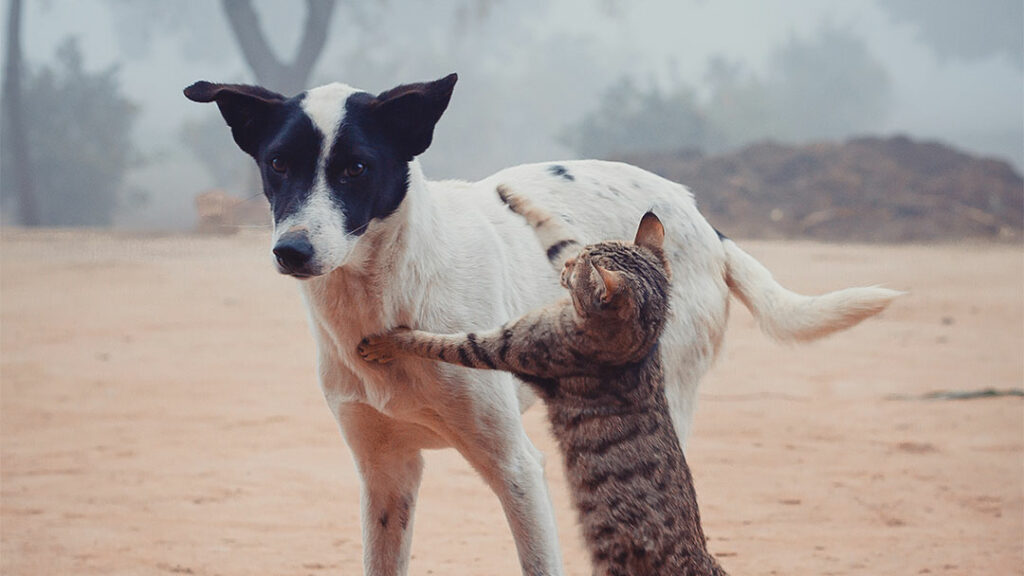Ever wonder what your cat is trying to tell you when they arch their back, pull out their claws, or blink slowly as they stare you down from across the room? With dogs, feelings often seem written in neon on their foreheads, but cats can be cryptic and complex, though that’s not to say they’re not speaking to you. Understanding the behavior of house cats will help you have a better relationship with your feline friends and provide them with a life of happiness and health. This guide will help you interpret your cat’s signals so you can increase your kitty’s satisfaction and deepen your bond.
Purring: A Sound of Contentment or Something More?
The comforting hum of a cat’s purr is one that all of us cat owners know. While purring is often associated with a happy, relaxed cat, it can mean many things. Cats even purr when they’re scared, this article notes. Some research suggests cats purr to soothe themselves or signal that they need something, such as when they are hungry or in search of comfort. If a cat’s purring in your lap in the middle of the night while you’re half asleep, chances are they’re happy. But if they’re purring behind the couch or in the wake of an injury, you may want to give some thought to the bigger picture and see if something’s up.
Kneading: A Comforting Throwback to Kittenhood
And that oh-so-cute kneading action — where your cat repetitively presses her paws into a blanket or your lap — starts in kittenhood. Kittens knead the belly of the mother cat to encourage milk to flow; many cats retain this comforting habit into adulthood. When your cat does this, while it can be annoying, it’s their way of communicating that they’re feeling safe, loved, and comfortable. Some cats indulge in a bit of kneading while they purr, meaning they’re doubly content. But if you notice it happening a lot, it can be a sign of stress or boredom, so you may want to monitor it.
Tail Language: The Secret to Feline Communication
Your cat’s tail is similar to a flag flicking his emotions, and understanding how to read it can make you more empathetic toward their mood swings. For example:
- A tail held high signals confidence and happiness.
- A low or tucked tail suggests fear or submission.
- A puffed-up tail is a sign of fear, aggression, or being startled.
- A twitching or flicking tail often means irritation or excitement.
A straight-up tail with a slight hook at the end: friendly greeting. When your cat’s tail is whipping back and forth rapidly, for example, you should generally give them some space, since they might be getting annoyed or overstimulated.
The Zoomies: A Burst of Feline Energy
If your cat is racing through your home, sliding around corners, and practically jumping off the walls, they’re having the famous “zoomies,” otherwise known as frenetic random activity periods (FRAPs). This is to be expected, especially in the case of indoor cats who can’t go as far afield. Cats are crepuscular, meaning that they are most active at dawn and dusk, so don’t be shocked if the zoomies strike during those times. Regular play with toys such as feather wands, laser pointers, or treat puzzles can help burn off some of that excess energy and lessen these unexpected explosions.
Scratching: Not Destruction, But Communication
Scratching can be destructive, but it’s also a normal part of a cat’s life. Cats scratch to remove the outer layer of their claws, to stretch and exercise their muscles, and to mark their territory through scent glands located on their paws. It’s not bad behavior when your cat claws at the couch or carpet — it’s instinct. Ensure scratching posts, mats, or cutting boards are in locations your cat goes. Simply putting these mats close to windows, chairs, or doors will help keep your furniture clear and preserve your investments.
Meows, Trills, and Chatter: The Language of Sounds
Cats communicate vocally in several ways. Here’s what each sound means:
- Meowing is a general-purpose sound that cats primarily use to communicate with humans. It can mean “I’m hungry,” “Let me out,” or simply “Pay attention to me!”
- Trilling is a friendly, inviting sound, often used by cats to greet their humans or other pets.
- Chirping or chattering is commonly heard when a cat watches birds or squirrels from the window. This sound may indicate excitement, frustration, or even a hunting instinct.
- Hissing, growling, or yowling are warning sounds that signal discomfort, fear, or aggression.
Listening, really listening to your cats range of sounds and observing the context – you can get a better sense from it what they are asking for or how they’re feeling.
Slow Blinking: A Sign of Trust and Affection
If your cat stares at you and blinks, she’s giving you kitty kisses, a catlike way of showing affection and trust. Known as the “slow blink,” it’s a form of talking, a feline kiss. Cats that slow blink at you are saying, “I trust you. Because blinking slowly back at a cat may result in a stronger bond. It’s a simple gesture, but an incredibly effective way to show your cat love!
Hiding: When to Be Concerned
Cats are predators by nature, but they are also prey animals, which makes it natural for them to enjoy finding quiet, enclosed spaces to nap and feel safe. But if your cat is hiding far more than you’d expect, or in out-of-the-ordinary places, it may be a sign that something is off. Illness, injury, or stress from environmental changes — such as a new pet, a move or loud noises — can result in more hiding. If your cat is hiding/exhibiting unusual behavior beyond one week, it would be smart to rule out any health issues with a vet visit.
Gifting Prey: A Token of Love
If your indoor-outdoor cat shows up at the door with a dead mouse, bird, or insect, it means they want to share the success of a hunt with you. Though it might not be pleasant, it’s a way that this pet can show trust and affection. Some experts have speculated that cats bring prey to teach humans how to hunt, or because humans are terrible hunters and need more to eat or our cats view us as family. Indoor-only cats may perform this behavior by using your toys, which is very similar.
Conclusion
Your cat is communicating with you all the time—you just have to listen. From the purring to the tail flick and the slow blink and even the zoomie, everything has a purpose. Via understanding body language, sounds, and other things, we can better meet their needs, build a better relationship with them, and keep them healthy and happy.
Don’t forget, each cat is an individual. Spend time getting to know the special quirks and signs of your cat, and you will find yourself with a richer, more fulfilling relationship. After all, your cat may not know your language, but they are definitely speaking to you — through their behavior. It’s up to you to figure out what it is they are trying to communicate.



